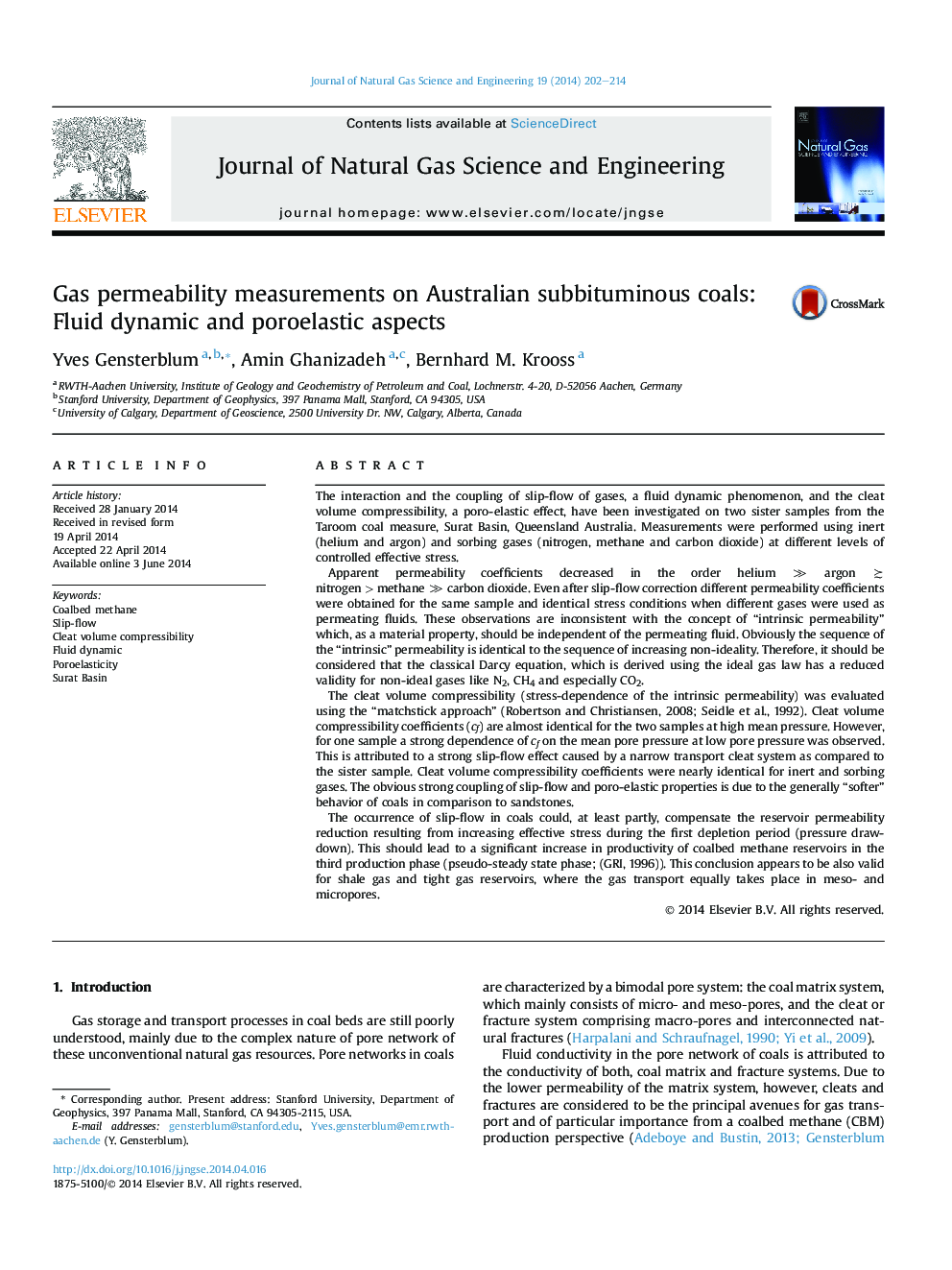| کد مقاله | کد نشریه | سال انتشار | مقاله انگلیسی | نسخه تمام متن |
|---|---|---|---|---|
| 1757988 | 1523021 | 2014 | 13 صفحه PDF | دانلود رایگان |
• App. permeability coefficients decreased in the order of increasing sorption capacity.
• After slip-flow correction different permeability coefficients were obtained.
• Cleat volume compressibility cf were nearly identical for inert and sorbing gases.
• Strong dependence of cf on the mean pressure at low pore pressure.
• Strong coupling of slip-flow and poro-elastic properties.
The interaction and the coupling of slip-flow of gases, a fluid dynamic phenomenon, and the cleat volume compressibility, a poro-elastic effect, have been investigated on two sister samples from the Taroom coal measure, Surat Basin, Queensland Australia. Measurements were performed using inert (helium and argon) and sorbing gases (nitrogen, methane and carbon dioxide) at different levels of controlled effective stress.Apparent permeability coefficients decreased in the order helium ≫ argon ≳ nitrogen > methane ≫ carbon dioxide. Even after slip-flow correction different permeability coefficients were obtained for the same sample and identical stress conditions when different gases were used as permeating fluids. These observations are inconsistent with the concept of “intrinsic permeability” which, as a material property, should be independent of the permeating fluid. Obviously the sequence of the “intrinsic” permeability is identical to the sequence of increasing non-ideality. Therefore, it should be considered that the classical Darcy equation, which is derived using the ideal gas law has a reduced validity for non-ideal gases like N2, CH4 and especially CO2.The cleat volume compressibility (stress-dependence of the intrinsic permeability) was evaluated using the “matchstick approach” (Robertson and Christiansen, 2008; Seidle et al., 1992). Cleat volume compressibility coefficients (cf) are almost identical for the two samples at high mean pressure. However, for one sample a strong dependence of cf on the mean pore pressure at low pore pressure was observed. This is attributed to a strong slip-flow effect caused by a narrow transport cleat system as compared to the sister sample. Cleat volume compressibility coefficients were nearly identical for inert and sorbing gases. The obvious strong coupling of slip-flow and poro-elastic properties is due to the generally “softer” behavior of coals in comparison to sandstones.The occurrence of slip-flow in coals could, at least partly, compensate the reservoir permeability reduction resulting from increasing effective stress during the first depletion period (pressure drawdown). This should lead to a significant increase in productivity of coalbed methane reservoirs in the third production phase (pseudo-steady state phase; (GRI, 1996)). This conclusion appears to be also valid for shale gas and tight gas reservoirs, where the gas transport equally takes place in meso- and micropores.
Figure optionsDownload high-quality image (62 K)Download as PowerPoint slide
Journal: Journal of Natural Gas Science and Engineering - Volume 19, July 2014, Pages 202–214
